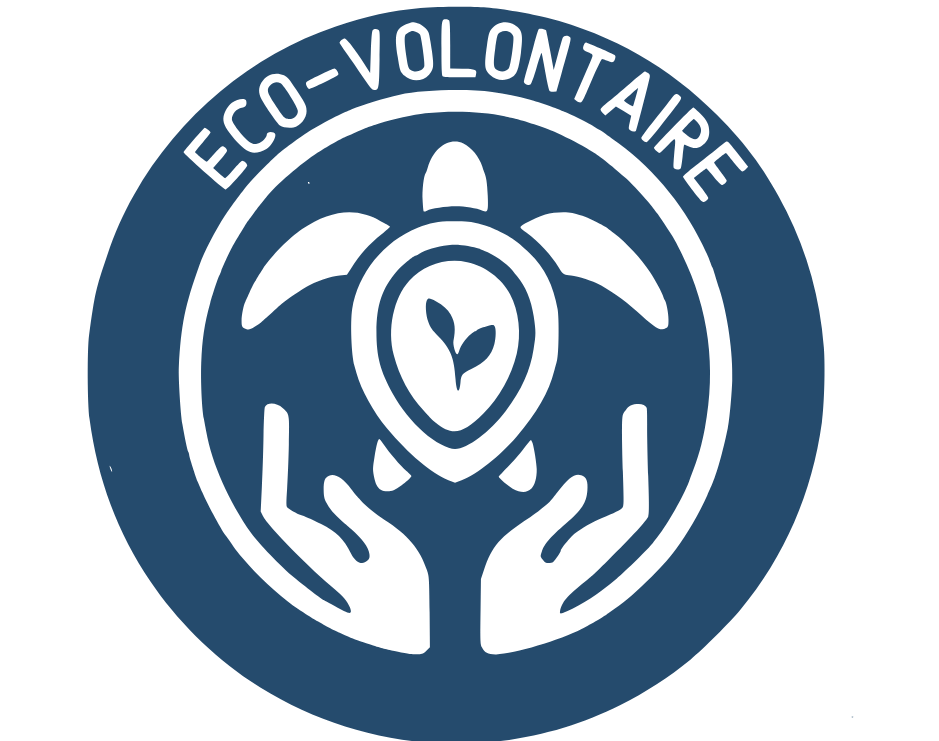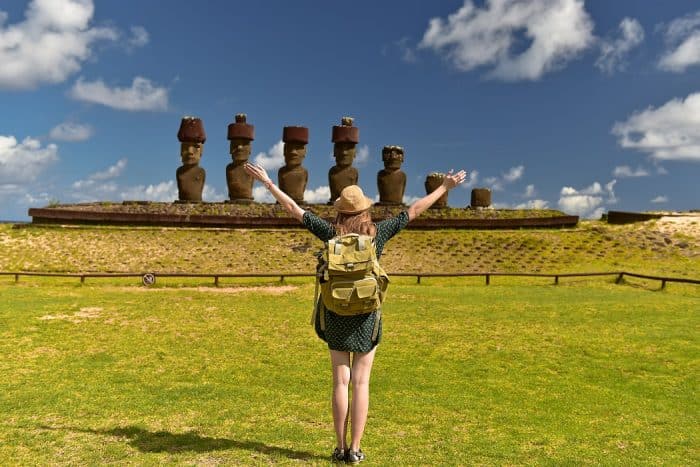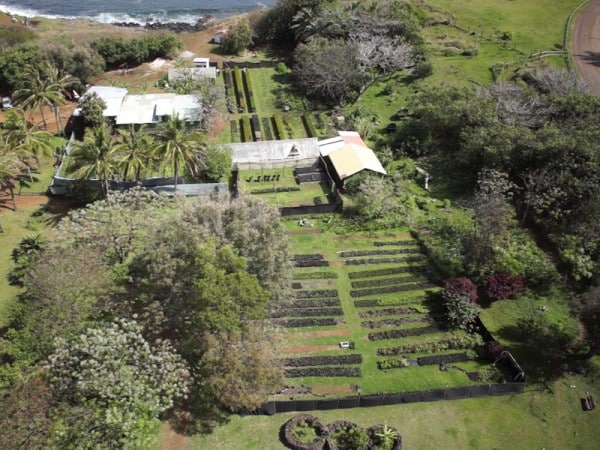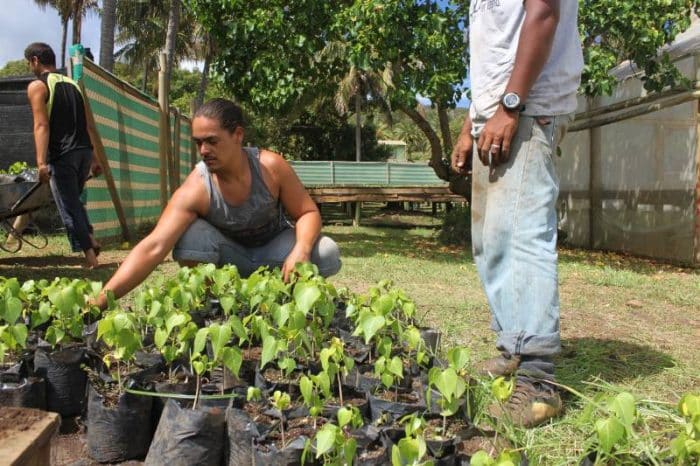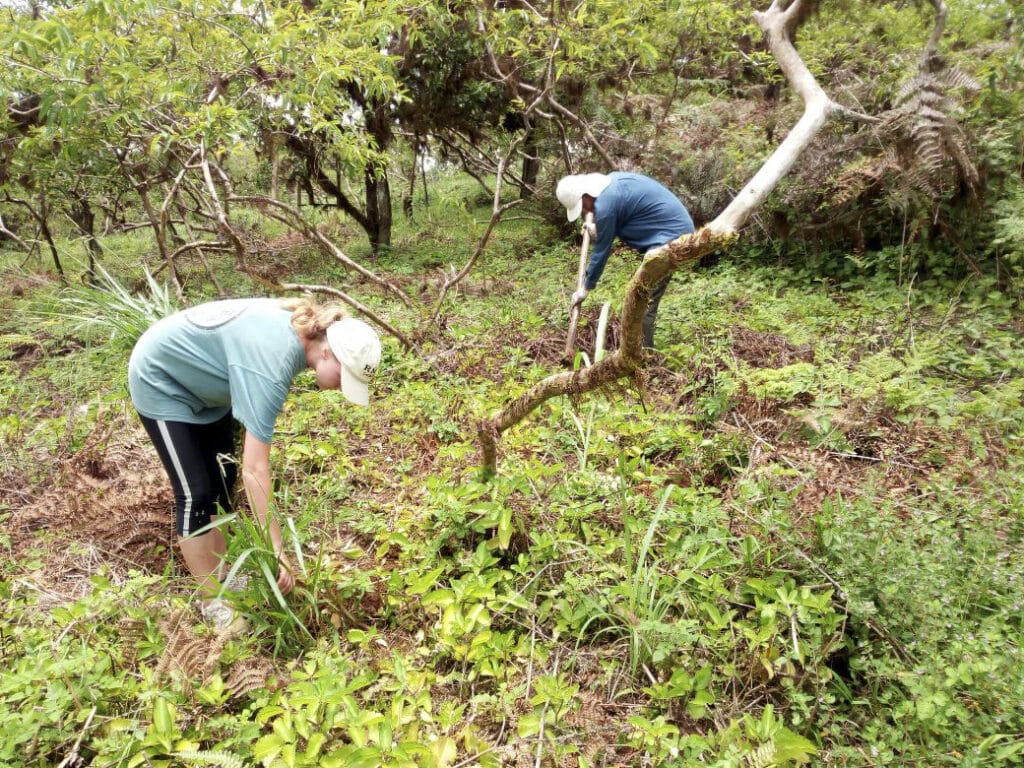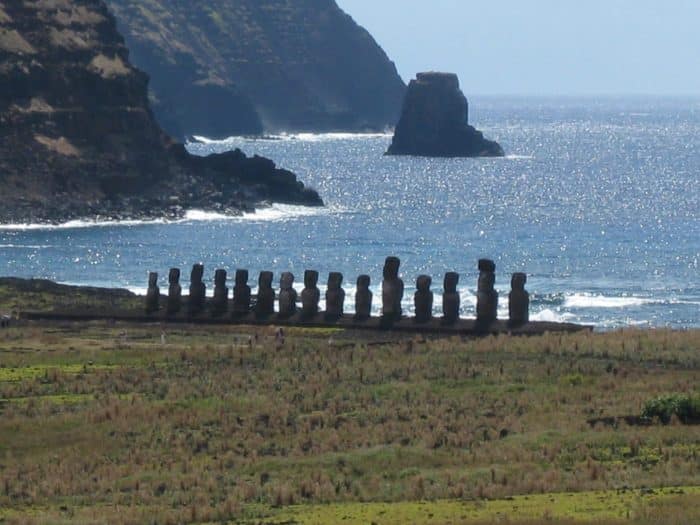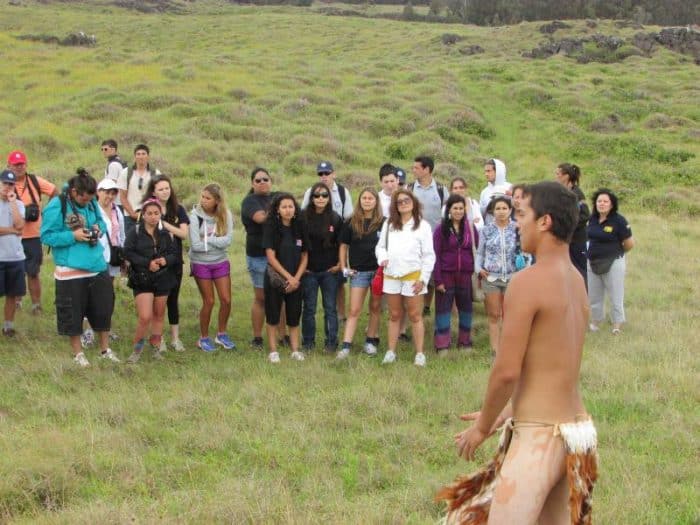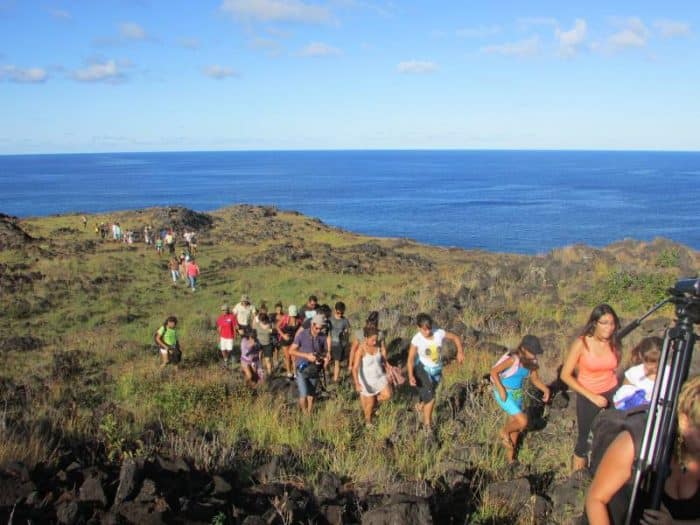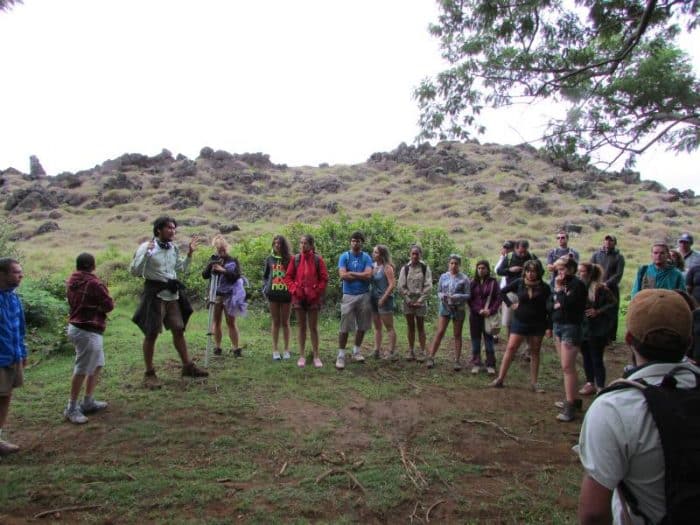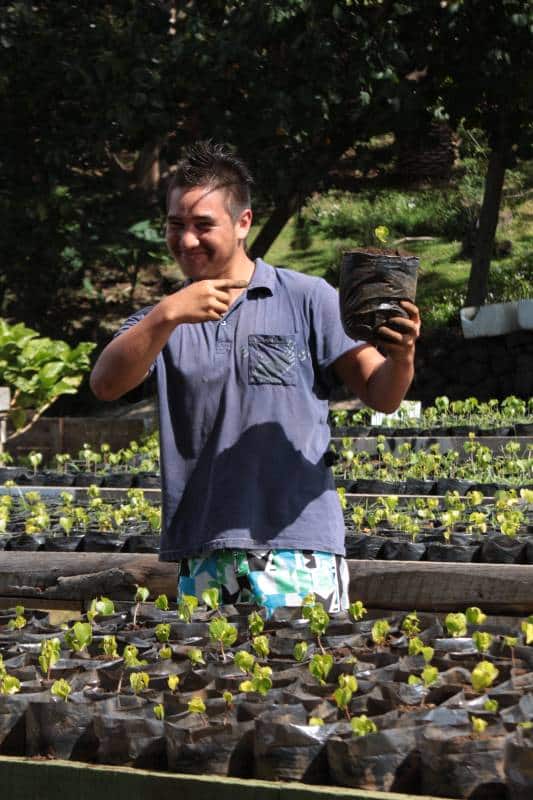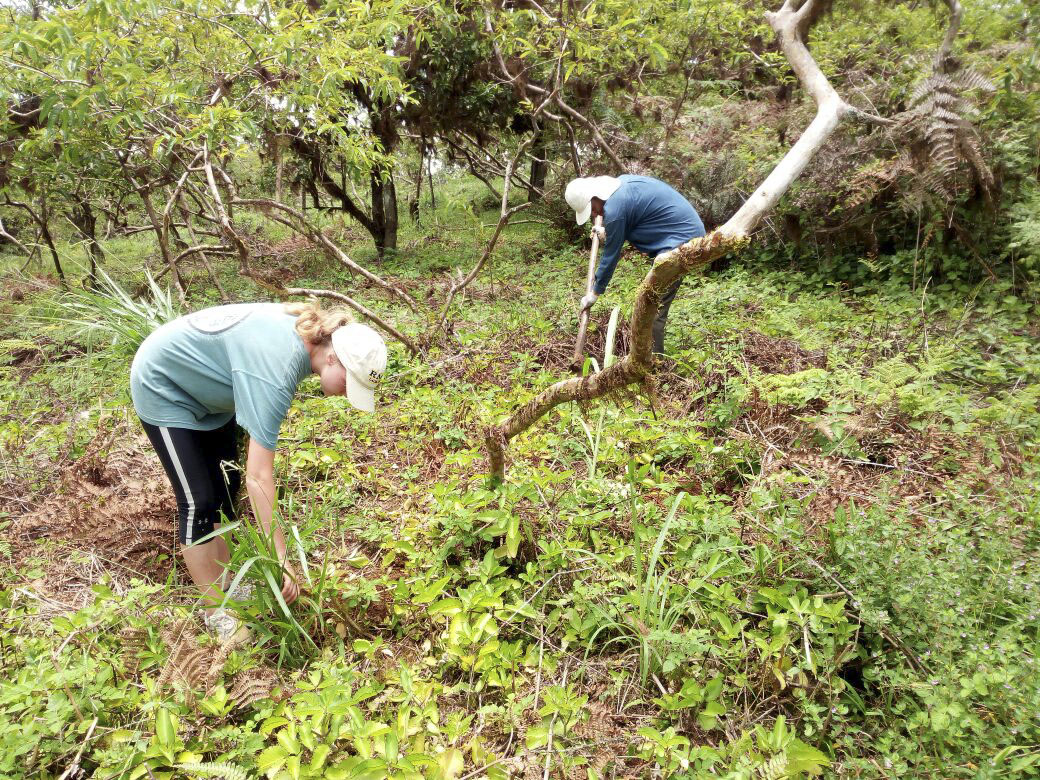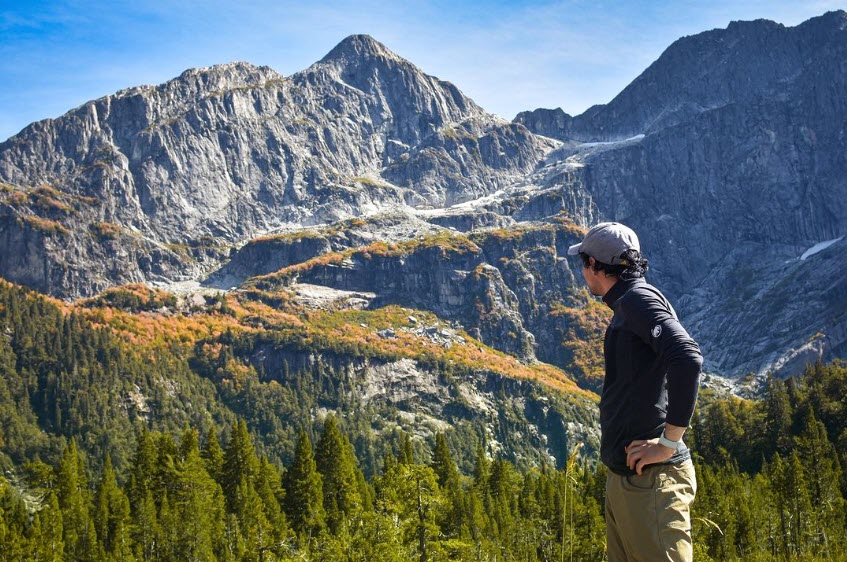L’île de Pâques a mis en place un programme de protection de l’environnement pour se préparer aux effets du changement climatique. Participez à cette formidable expérience en vous engageant pour des vacances actives au coeur du Pacifique ! Tous les voyages éco participatifs en Amérique du Sud et Centrale
L’île de Pâques se prépare au changement climatique
Ce projet de volontariat, qui se situe à proximité de la plus grande ville de l’île, Hanga Roa, est géré par l’Agence nationale des forêts, une division du ministère chilien de l’environnement. La protection des ressources naturelles de l’île de Pâques, grâce à différents programmes, est l’une des principales missions de l’Agence nationale des forêts. La prévention et le contrôle des incendies de forêt, le contrôle de l’érosion, la surveillance des ressources, la conservation des plantes endémiques et l’éducation à l’environnement font partie des engagements les plus importants.
Reboisement avec des plantes endémiques
En outre, l’Agence nationale des forêts met actuellement en place un programme de protection de l’environnement afin de préparer la communauté aux effets du changement climatique. Le reboisement de l’île et l’introduction de plantes endémiques sont deux des objectifs du projet. En effet, celles-ci ont été considérablement réduites par des décennies de déforestation, de destruction et d’intempéries. Des plantes sont cultivées afin d’être replantées dans les zones touchées. Un travail en laboratoire est également mené pour comprendre les défis de la germination et de la reproduction des plantes indigènes et garantir leur pérennité.
Volontaire pour la biodiversité de l’île de Pâques
Ce projet à l’Île de Pâques est unique. En participant à ce séjour en écovolontariat, vous découvrirez des la fascinante histoire de l’île de Pâques, travaillerez à son avenir, tout en vous immergeant dans sa culture mystique.
Les tâches confiées aux écovlontaires sur l’Île de Pâques sont variées et s’adressent aussi bien aux volontaires qui aiment travailler avec les gens qu’à ceux qui préfèrent mener des recherches et préserver l’environnement.
Un large choix de missions
Vous pouvez faire part de vos préférences et de vos compétences afin que l’équipe locale puisse vous affecter, dans la mesure du possible, à un poste qui vous corresponde. Il existe des postes de travail où l’on passe plus de temps à l’intérieur et d’autres où l’on passe la plupart du temps à l’extérieur. En outre, les volontaires peuvent apporter leurs connaissances et leurs compétences dans les domaines de la planification, de la conception, de la photographie, de la vidéo et de la traduction.
Les horaires de travail du projet sont flexibles. Les volontaires travaillent généralement du lundi au vendredi, à raison d’environ 6 heures par jour. Toutefois, des programmes d’une demi-journée sont également possibles.
Les responsabilités confiés aux volontaires sont les suivantes
- Collaboration au programme de protection du climat
- Collaboration à des projets avec la communauté insulaire
- Collaboration au bureau administratif ou dans le domaine de la recherche et du traitement des données
- Collecte et enregistrement des semences de plantes
- Contrôle de l’implantation des semences sur la plantation
- Conservation des semences et des plantes indigènes
- Travaux de reboisement
- Surveillance et enregistrement des populations forestières et végétales
- Aide à l’éducation à l’environnement
- Encadrement des visiteurs du parc national
- Organisation et mise en œuvre d’événements pour les étudiants et les touristes sur le thème de la protection de l’environnement et du climat.
Nota Bene : les tâches peuvent varier. Elles dépendent de facteurs tels que le nombre de volontaires, le temps, la saison, les besoins actuels du projet, ainsi que la motivation personnelle. Il se peut que chaque volontaire ne soit pas entièrement impliqué dans toutes ces tâches.
Dates
- Deux semaines minimum, toute l’année. Jour d’arrivée flexible
Tarifs
- Frais de dossier : 150 €
- Coût du programme : 865 € (pour un séjour minimum de 2 semaines)
- Semaine supplémentaire : 300 €
Ce qui est inclus dans le tarif
- Chambre simple ou partagée dans une maison d’hôtes
- Conseils professionnels en anglais
- Traduction de vos documents de candidature
- Stage de bénévolat au Chili
- Un soutien anglophone dans le pays
- Manuel sur le Chili
- Guide interculturel
- Numéro d’urgence 24/7
- Informations sur une assurance voyage adaptée
- Certificat de participation
Non inclus dans la tarif
- Billets d’avion
- Assurance voyage
Hébergement
Les volontaires sont logés dans des maisons d’hôtes locales à Hanga Roa. Des chambres individuelles ou partagées sont proposées (en fonction des disponibilités). Les volontaires ont accès à une cuisine pour préparer leurs repas. Internet WIFI est disponible.
Localisation
L’île de Pâques est l’endroit habité le plus isolé au monde. Elle est située au milieu de l’océan Pacifique. L’île est d’origine volcanique, ce qui la rend à la fois culturellement et géologiquement fascinante. Par exemple, l’île n’a pas de rivières, toute son eau douce provient des précipitations !
Cette île est connue sous le nom de “Isla de Pascua” en espagnol, mais les habitants l’appellent “Rapa Nui” dans leur langue indigène. Depuis Tahiti ou Santiago du Chili, cette île d’environ 160 km2 est accessible en cinq heures de vol. L’Isla de Pascua est classée au patrimoine mondial de l’UNESCO et compte environ 6 000 habitants.
De nombreux touristes visitent l’île chilienne chaque année. La raison principale en est l’histoire culturelle et énigmatique qui entoure les Moai, les célèbres statues de pierre qui sont dispersées sur toute l’île.
Découvrez les Moai
Pendant votre temps libre, vous pourrez explorer l’île, à pied ou à cheval et découvrir les fameux Moai. La façon dont les Moai ont été construits et leur signification ne sont pas encore totalement comprises. Les habitants sont très fiers de leur culture et se désignent eux-mêmes et leur île sous le nom de Rapa Nui. Ils cultivent leurs traditions, leur musique, leur art et leur langue pour séduire les touristes de manière incontournable !
Un festival en février
Pour commémorer l’arrivée des premiers colons polynésiens, l’île organise un grand festival chaque année en février. Vos collègues de projet seront heureux de partager avec vous plus d’informations sur leur culture et leurs coutumes, et de vous indiquer les meilleurs endroits pour découvrir l’île hors des sentiers battus.
Tous les avis sur les missions South America Inside

L’agence partenaire
Le partenaire est une agence interculturelle fondée en 2003, par Marion, une Allemande installée au Chili. Marion s’est spécialisée dans l’organisation de voyages solidaires et participatifs, de séjours en écovolontariat, mais également de séjours linguistiques et de programmes éducatifs dans toute l’Amérique latine. Cette agence propose des mission au Chili, au Costa Rica, au Nicaragua, en Equateur… Que vous soyez étudiant, professionnel ou retraité, ses séjours s’adressent à ceux qui veulent vivre l’Amérique latine autrement qu’en simple touriste. Tous les séjours avec South America Inside
